 By Tino Mantella
By Tino Mantella
TLG President & CEO
How you retain talent must be one of the most studied questions of all time. With so much data available to us, we all should be able to find the low-hanging fruit regarding best practices, but there are many challenges with this theory.
First, the data is conflicting regarding why employees are motivated to stay at a job or leave. Secondly, the propensity to stay or go is complex. The impetus to act can be generational (Generation Z vs. Boomers), necessity (need for greater pay), your boss (good or bad), and so on.
Since retaining a highly motivated workforce is complicated, I will draw on my experiences. Given my opportunity to lead thousands of employees and supervise hundreds throughout my career, here are a few things I’ve learned:
Be Purpose-Driven
Until recently, my job trajectory had me leading major not-for-profit organizations like the YMCAs, Arthritis Foundation, and Technology Association of Georgia. I find myself in awe of those whose number one driver is purpose and fulfillment. They are in the job to change the world for the better.
My gang intervention team at the Chicago YMCA was filled with people like this. Their purpose in life was to extricate young men and women from gangs and the surrounding violence. Many on the team came from gangs themselves, so they approached their roles with tremendous fervor. During my ten years leading the Y, our retention rate was close to 100%. My job, and the task for those who supervised our gang intervention program, was to stay out of the staff’s way while providing the support they needed to make a difference. It’s true that pay, benefits, and opportunities to learn, grow, and advance are all important. But they don’t hold a candle to purpose and passion.
The self-motivated gang intervention may be a more extreme case. I don’t want anyone to think that all not-for-profit employees rank purpose as their most important issue with respect to job-staying power. Like the for-profit sector, the variables are similar: Money, benefits, peer relationships, opportunities for growth, remote work, and the boss all matter. However, we are finding that purpose is just as important in the for-profit sector as it is in the not-for-profit sector.
Professional Development is a Must
Today, research has shown that opportunities to learn and develop are high on the list of employee satisfaction. Several decades back, companies like IBM were known for their exceptional training programs. Perhaps the pace of change and economics have short-changed professional development opportunities. In light of the escalating number of calls we are receiving at Turknett Leadership Group for leadership development support like coaching, perhaps the pendulum is swinging back. In a tight employee market, providing professional development opportunities is not only the right thing to do, it’s the smart thing to do.
Cutting Through the Clutter
Revisiting the topic of “Cutting through the Clutter,” there are a few things that your organization can do to better retain talent:
• Purpose-Driven: Be sure the purpose of the company is sincerely more than the financial bottom line. If money is all the leaders talk about, then perception becomes reality.
• Invest: Challenge every employee to unleash their full potential by taking on new assignments while providing them professional development opportunities.
• Transparency: Be transparent about all things in the company. Help your people feel they are in the know and “inside the tent.”
• Career Development: Provide opportunities for employees to develop plans for growth.
• Belonging: Employees should not only feel that they are being included at the table, but they should feel that they belong at the table. When an employee feels that they belong, they are far likelier to be engaged.
Finally, employees today are generally not going to stay in one company for their entire career (according to the Bureau of Labor Statistics, it’s about four years). We want to keep good employees as long as we can but also can be ready to mentor them on the next opportunity, which may be outside of your company.
Most things in business and life aren’t rocket science unless it is rocket science. The bottom line is this: retaining talent is not a one-solution issue, it’s a process combining purpose, employee investment, transparency, career development, and inclusion.
It’s a journey and not a destination. Are you ready to retain your talent?
Tino
Contact Info:
Cell: 678-984-8528

